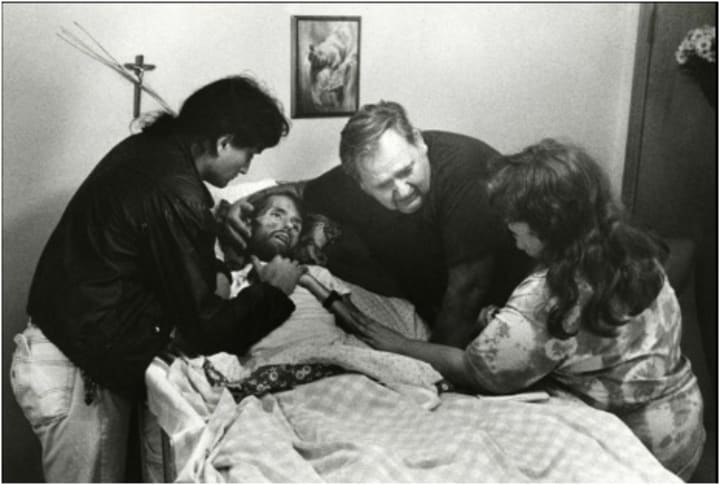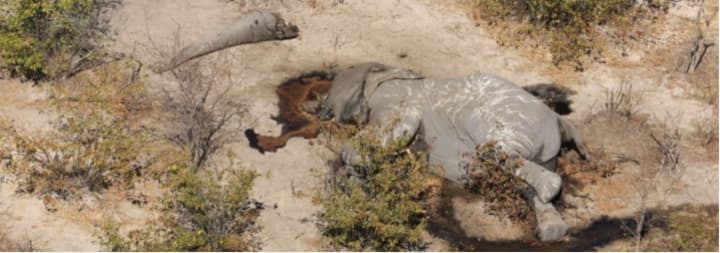What is YOUR motive?
An essay for my second semester of a college writing class.

We learn about wars and revolutions in school; groups of people joining together to defeat an evil for the greater good and with those stories are images. For many of history’s famous conflicts all we have are words, written accounts of violence and drawings on rocks. However, when the camera was invented that changed. Suddenly these gruesome scenes could be documented as they were happening, eternalized for anyone to see. Not only this, now these images could be published and spread globally for others to learn about the atrocities occurring in any corner of the world. I would like to believe that this was a good, necessary change and an improvement to society, that with photographs and visual documentation of these events people would start to speak up. That photography could now be used as propaganda against cruelty and warfare, to raise awareness about authoritarian governments, criminality, animal rights and other ailments inflicting our fragile world. But others would disagree with me, arguing that the spread of these images is unethical, and disrespects the victims of such atrocities. These people might be correct, but I believe that it all comes down to the motive one has for publishing the images in the first place, and whether those motives are morally correct or not.
Last weekend my father came to visit New York City, and as a photographer himself we spoke a lot about the morally complex topic that is the motives behind sharing photos. These motives can be morally complex because there are usually many ways to approach an image of suffering, and in most occasions there will be those who support the publication of the image, and those who are against it. If the photo is being used to prevent future suffering, shouldn’t we allow it? But if it’s used with no intent for reform then it becomes an invasion of privacy…right? The ethics behind the spread of such images can raise may questions and begin many debates, thus, making it a very morally complex and ambiguous topic. Now back to the inquiry, my father takes mostly landscape photos, but he also dabbles in street photography when visiting a new place. In 2019 he was given the opportunity to spend two weeks in South Africa through the company he worked for with the goal of teaching students at a local school about technology. The trip itself had nothing to do with photography, nonetheless, my father took his camera and captured beautiful and heartbreaking moments. He interviewed many of the people he took photos of and then posted a little bit about them on his Instagram. When I asked him why he decided to make those images public he said “photography allows us to connect to the world and with people in ways that words can’t. Through photography I can tell stories the way I see the world in front of my camera.” For my father, a man with a corporate job and not a lot of time on his hands, photography is a form of self expression and storytelling as he sees the world.
During his time in the city, we visited the Fotografiska museum and spent some time flipping through Steve McCurry’s and Sebastiao Salgado’s books. Both photographers have lived among poverty and hardship for large parts of their lives, capturing every moment and later displaying the images for the world to see. These images are meant to elicit a distinct emotion and response from the viewer: compassion. In an article for TIME magazine McCurry states, “I’ve always let my pictures do the talking” and that he would say that he is a “visual storyteller.” But the question remains, is storytelling a moral reason for publishing an image of impoverished individuals? I would argue that yes it is. McCurry’s images ask for compassion and understanding, they respectfully tell the stories of people who have had so much taken away from them but are resilient and beautiful. Many of them document the war in Afghanistan, a conflict that has been ignored by the media for so many years, a conflict that is ever growing and taking victims along with it. Storytelling, in my opinion, is the most ethical and pure motive for the publishing of difficult and emotionally charged images.
Many images are published as a way to call for peace, reform, or aid for victims of horrible crimes. While conducting research for this essay I came across this quote by Cesar A. Cruz, an activist, gang violence prevention advocate and dean at Harvard University, which states “art should comfort the disturbed and disturb the comfortable.” Through this quote, Cruz suggests that art, or for the purposes of this essay photography is supposed to be a driving force of emotion in the individual that views it. Personally, I view all photos as art thus, the word “art” and “photography” in Cruz’s quote becomes interchangeable. The first part of the quote reminded me of Jessica Fishman’s book Death Makes the News in which she describes a story where a father of a young girl who had been raped and hung wanted the media to publish the images of his daughter’s corpse (Fishman 205). When the public raises concerns about the spread of the horrifying image, the father states that he “didn’t have any problems with people taking the photographs; the problem is the thing that happened with our children.” This response by the father leads me to think that the spread of the images, which he knows will make viewers horrified, almost comforts him because they might stop a future attack. His motive for allowing the image to be published is for visibility, and a call for action. Thus, suggesting Cruz’s idea that “art should comfort the disturbed,” in this case the disturbed is this broken hearted father who last lost his daughter and is allowing the images of the scene to be published in order to make viewers stop and think about the situation. The second half of the quote can also be applied to this situation. I would argue that much of the public that argued against the spread of the image simply did not want to be faced with the horrifying image. These people would rather live comfortably in blissful ignorance and censor or suppress the spread of such images as a way to prevent personal discomfort. This exercise of applying the quote to a real event helped me better understand the consequences of sharing, and not sharing, certain images and stories. Art and photography are interchangeable in my mind, even when portraying scenes of suffering because they affect the viewer’s emotions and urge them to fix the problem at hand.
Activist and social movements are notorious for utilizing morally complex images of suffering in order to raise awareness about the certain topic they are defending, or fighting against. I believe that in this case the idea of storytelling comes into play once again. Many social movements aim to tell a story about a marginalized group, or a horrifying event that is happening in some corner of the world and the best way to do this is through photography. And sometimes photos can even become symbols for that campaign. Movements such as the Civil Rights movement and more recently the Black Lives Matter movement, animal rights movements, and even the AIDS movement used images of suffering in order to call attention to their cause.
The 1980s and 90s saw the height of the HIV/AIDS epidemic, a disease that proved to be incurable and that ravaged the human body. The disease was heavily stigmatized and in many cases patients became shut out by society, including their own family members. Photographer Gideon Mendel set out to “capture the kind of compassion and the love which would challenge the fear and stigma.” Mendel wanted to change the way the public saw AIDS patients by showing them something different than what the media was portraying, which at the time was photos “of emaciated, anonymous dying bodies.” He captured the stories behind the patients and demonstrated their humanity in a time when AIDS patients were only viewed as their disease and sexuality. It baffles me that an entire world could turn against people in need and suffering, and define them by their disease. Thus, I was interested to learn about Mendel’s project because it worked to fight against the stigma and demonstrate that beyond the sickness someone was suffering. Another example of bravery and visibility is the story of young gay activist David Kirby, who’s photo taken by Therese Frare moments before Kirby’s death changed the face of the HIV/AIDS movement. Frare had previously received consent from David himself to take photos of him; his only request was that Frare didn’t use the images for personal profit. As an activist himself, David wanted the photos of his own suffering to call attention to the disease, and that’s exactly what happened. Frare’s image of David on his death bed was published in LIFE magazine in November of 1990, and it is estimated that one billion people saw the iconic and heartbreaking image. However, only two years after TIME magazine’s publication of the image, Bennetton, a clothing company, controversally used the image in order to sell their clothes. This specific motive for the image went against David’s wishes of not using his image for a profit.

Humans are not the only ones that can benefit from the spread of certain images but only if the motives are ethical. Shark fin soup is a hot commodity in Southeast Asia, China, and Taiwan, but sharks are going extinct. Shark finning is the process of catching large sharks, cutting their fins off and returning the sometimes still alive sharks back to the ocean. Without their fins these magnificent animals who were once the top of the food chain will obviously not be able to swim causing them to have untimely deaths by drowning, starving, or being eaten by fish. The fins are then sold in order to make soup. Photos like these are regularly published by large news outlets as a way to call attention to this horrible industry. While not portraying suffering outright, the image is unsettling and allows the viewer to imagine just what happened to the shark itself. A 2015 NPR article explains that “thanks in part to publicity campaigns condemning the delicacy, imports of shark fins into Hong Kong…have dropped 29 percent since 2011,” suggesting that the spread of images such as the one above are helpful in the race to save sharks. The photo above was the central focus of a recent article from The Guardian that explains how dire the shark’s situation is. This image is a lot more graphic, and demonstrates how helpless these predatory animals look when caught by careless fishermen. Images like these are published in hopes of saving the animals, which if you ask me, is an exceptional motive.

Sharks are not the only creatures that are suffering due to the carelessness of humans. In 2020, “Elephants Without Borders'' a non-profit organization from Botswana that aims to end elephant poaching, states that “poaching is essentially unchanged since 2011.” The act of poaching refers to the illegal harming of elephants in order to retrieve their ivory tusks, the practice kills the animal since the trunk has to be cut off and the skull severely damaged. The organization publishes images such as this horrifying and disgusting photo in order to raise awareness to the severity of the issue. When I first saw this image, my stomach turned. Then I looked at it again, more closely, and I felt horrible. A wave of uneasiness and almost sickness washed over me, I had to switch the tab and take a moment to process what I had seen in order to keep reading and writing about it. “Elephants Without Borders' ' uses their technology in order to tell these horrible stories, and urge the public to care more about elephant poaching. Once again the motive for publishing images such as this one is storytelling, and perhaps, the most important part of the story is that this image is not an isolated incident, I came across at least three images of the same nature before I stopped looking for them because I simply couldn’t witness a similar scene again.

The bottom line is, photos that portray suffering or violence should only be shared when they are working to end a serious issue. The motive must always be honest and calling attention to something greater. Although I don’t typically share images of suffering on social media (nor do I take them, because I am privileged to live somewhere where I’m not exposed to those scenes) this inquiry has inspired me to think more about the photos I take and share. Photos are art. Photos are powerful. I believe that photos can change the world.
About the Creator
Beca Damico
hi :) my name is beca and im a freshman at nyu! i love writing more than anything. in my opinion writing is the best form of self expression. here i will get to share what i am passionate about, i hope you enjoy.






Comments
There are no comments for this story
Be the first to respond and start the conversation.